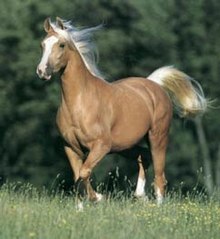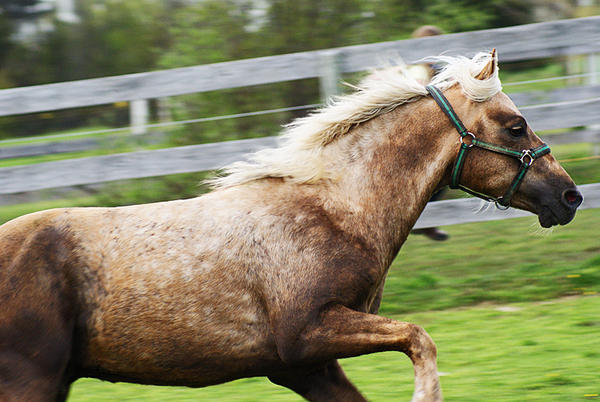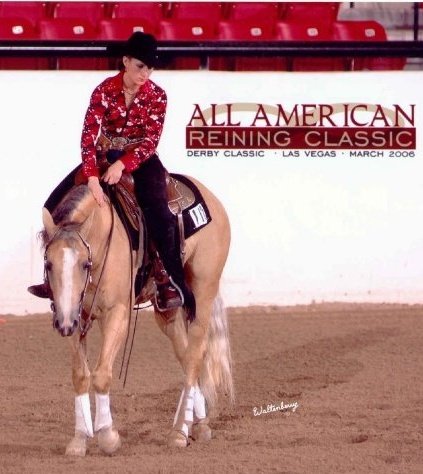Palmino Horse Pictures Biography
Source(Google.com)
This the purpose of this paper to summarize present knowledge of the genetics
Iof the Palomino horse as it has developed in the past 20 years, beginning with
the studies of SALISBURY and BRITTON published in 1941; and also to present a
resumk of changes in our knowledge of related genotypes resulting from increased
knowledge of the Palomino itself.
The color of the Palomino may be described as yellow of shades varying from
cream to orange, but its distinctive feature is the very light color of mane and
tail, which are almost white and are so designated in stud book descriptions.
Its genetic constitution involves five major color genes, four of general occur-
rence among mammals, and one peculiar to horses.
The five genes with which we are here concerned happen to be designated by
the first five letters of the alphabet, a dominant allele of each being labelled by
the capital letter, A, B, C, D, or E.
The color gene, C: We may begin a description of these genes with C, a gene
which is necessary to the production of color in the coat of a mammal.
In many mammals there occurs, besides the dominant allele C of the color
gene, a recessive allele, c, which when homozygous (cc) results in true and com-
plete albinism. In such an albino no melanin pigment is formed in any part of
the coat, or even in the eyes, which are pink.
A less extreme form of albinism occurs in many mammals, in which a mod-
erate amount of pigment is found in the coat. This is due to a different allele of
the color gene, which we may call an allele for incomplete albinism.
Both sorts of albinism, complete and incomplete, are found in the rabbit. The
snow-white Polish rabbit is a true albino with unpigmented coat and pink eyes.
The Himalayan and chinchilla varieties are incomplete albinos, having alleles
cH and cCh respectively of the color gene. Linkage studies have shown that all four
alleles, C, c, CH and cch lie at the same genetic locus.
In horses there has been observed no well-authenticated case of albinism either
complete or incomplete, so that in describing the genotypes of horses no mention
need be made of the color gene since in all cases it is assumed to be present and
fully active.
It is true that ODRIOZOLA (1951) considers the dilution of coat color which is
found in the dun and the Palomino to be due to an incompletely recessive allele
of the color factor. But this interpretation, though plausible, is inconclusive, since
there is in horses no demonstrated allele of a color gene with which we might
Genetics 46: 1143-1150 September 1961 1144 W. E. CASTLE AND W. R. SINGLETON
make linkage tests of the dilution gene, whether we consider it an incompletely
dominant or an incompletely recessive modifier of color.
Palomino Horse Pictures Images Wallpapers Photos 2013

Palmino Horse Pictures Images Wallpapers Photos 2013

Palmoni Horse Pictures Images Wall papers Photos 2013

Palmoni Horse Pictures Images Wall papers Photos 2013

Palmoni Horse Pictures Images Wall papers Photos 2013

Palmoni Horse Pictures Images Wall papers Photos 2013

Palmoni Horse Pictures Images Wall papers Photos 2013

Palmoni Horse Pictures Images Wall papers Photos 2013

Palmoni Horse Pictures Images Wall papers Photos 2013

Palmoni Horse Pictures Images Wall papers Photos 2013

Palmoni Horse Pictures Images Wall papers Photos 2013
No comments:
Post a Comment